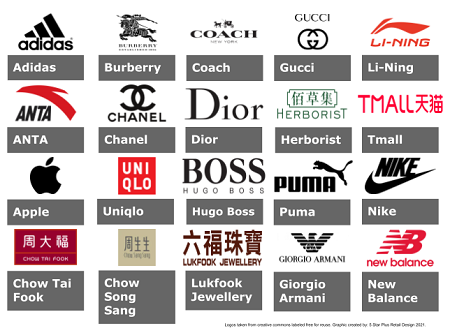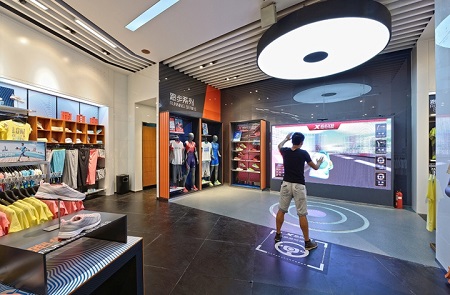Customer Centric Strategy
The needs of consumers continually shift in China’s retail market. It’s important for brands to pay attention and adjust their strategies to maintain their hold of the market. Brands need to think about how they can meet the needs and expectations of their consumers in a way that is adaptable in order to provide the brand stability in an ever-changing retail environment.

Image Source: Al Jazeera
Moving one year since the start of the outbreak in China, it is quite apparent to see the impact the pandemic had for consumers. Studies indicate that consumers have shifted their priorities which is reflected through the amount of overall consumption and the consumer’s shopping journey.
Why it’s important:
- A study by McKinsey showed that 14% of Chinese consumers will not shop at the same stores and 6% will not shop with the same brands that they used to prior to the outbreak.
- Offline sales in China fell by 50% at the peak of the outbreak and only recovered 37% in 2020 (Mckinsey, 2021).
- Customers have higher expectations and are more demanding after an economic downturn. Chinese consumers expect a customer centric shopping experience.
- Chinese consumers make up 35% of the luxury retail sector consumed globally(FW, 2020).
What this Means for Brands:
Chinese consumers have become a lot more self-aware after the initial impacts of a socially distant society were experienced in 2020. Their typical consumer journey was heavily impacted as a result. Suddenly consumers had to rely mainly on the digital end of retail to fulfill their daily needs. The key values of a brand that shifted in the beginning parts of the pandemic are as such:
- Experimenting: Some consumers started shopping online from different brands that they had not tried before. Due to the inability to go out and shop, consumers sought after available brands they could order from online. This expanded the reach of some brands, while other brands suffered for lack of digital presence. Overall, consumers continue to act less brand loyal than before.
- Quality: Consumers still demand high-quality items. Being able to try and return items worked for some. Seeing live-streams of real products allowed more consumers to see the quality. Ability to experiment using AI technology allowed consumers to virtually test the look and quality of items.
- Lifestyle: The outbreak caused many consumers to be more conscious of their health, which led to more purchases in certain sectors of the retail market.
- Purchases: Prior to the pandemic, many GenZ and young Millennial consumers did not pay much attention to their monthly spending habits. In fact, Chinese GenZ and Millennial consumers have the highest monthly disposable income in the world when compared to other consumers in the same age category. Most Chinese consumers in this age category live paycheck to paycheck. After experiencing the economic hardship caused by the outbreak, many consumers shifted their priorities to focus on spending less and saving more for the future.
- Time: Due to a high reliability on delivery services as a way to receive goods, the amount of time needed for delivery increased in the level of importance for purchase decisions. A consumer is more likely to order something for a brand that can deliver on the same day than a brand that needs more than 48 hours to deliver their order.
Understanding the Consumer Journey
The first step in providing a more customer centric approach requires the brand to understand the consumer journey in-depth. Understanding which journey its consumers are more likely to take in order to purchase from the brand, enables the brand to enhance the journey at the most important parts for their consumers.

Image Source: Mediapost
Tracking and analyzing up-to-date data of consumers is how a brand can begin to know more about its consumers. Real time data from social media, online sales channels, and offline sales channels, helps to gauge the overall level of customer engagement with the brand.
Brands that actively pay attention to customer engagement are able to adapt more readily when there are shifts in the market. They are also able to do it quickly, which creates a stronger customer engagement with their consumers compared to brands who don’t adapt as fast.
What this Means for Offline Retail
In an ever-growing digital world, it may seem as though offline retail is no longer an important part of the consumer journey. This is actually not the case when looking at China’s market. The total volume of offline sales have still not returned to pre-pandemic levels. However, it’s expected that these numbers will continue to recover in 2021 as the number of cases in China continues to remain relatively low.

Image Source: Marketwatch
Consumers still desire an experience that uniquely defines their consumer journey from others. Interaction with the brand, sensory engagement, and storytelling are just a few ways that consumer engagement can be increased. These ways are executed within the retail design of the store, pop-up space, and online channels. The main goal in mind is to provide their consumers with an engaging experience regardless of their overall consumer journey.
A Recent study by KPMG indicated high performing retail brands effectively utilizing a customer centric approach in their retail strategy (KPMG, 2021).

Image Source: 5 Star Plus Retail Design
These brands utilize different methods to drive the engagement of their consumers throughout the consumer’s journey both online and offline.
Customer Centric Retail Design

A successful retail store design in China includes a thoughtful layout of the customer flow, storytelling elements that create engagement with the brand and its products, interactive points that connect to other online channels of the brand. In the next article, we want to highlight some global brands that are ahead of the game when it comes to providing an excellently designed consumer centric retail environment.
This blog post was originally published by Melchers’ Retail Partner 5 Star Plus Retail Design, an interior design company specializing in the branded design of retail stores and restaurants. The original post can be found here.


